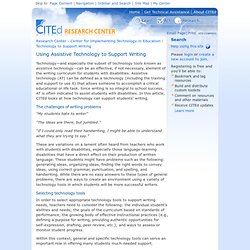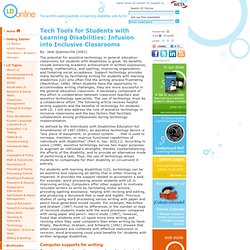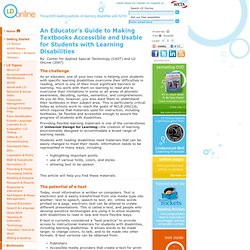

TECHMATRIX - [Home] Using Assistive Technology to Support Writing. Technology—and especially the subset of technology tools known as assistive technology—can be an effective, if not necessary, element of the writing curriculum for students with disabilities.

Assistive technology (AT) can be defined as a technology (including the training and support to use it) that allows someone to accomplish a critical educational or life task. Since writing is so integral to school success, AT is often indicated to assist students with disabilities. In this article, CITEd looks at how technology can support students’ writing. The challenges of writing problems "My students hate to write! " Tech Tools for Students with Learning Disabilities: Infusion into Inclusive Classrooms. By: Jane Quenneville (2001) The potential for assistive technology in general education classrooms for students with disabilities is great.

Its benefits include enhancing academic achievement in written expression, reading, mathematics, and spelling; improving organization; and fostering social acceptance. Support technology provides many benefits by facilitating writing for students with learning disabilities (LD) who often find the writing process frustrating (MacArthur, 1996).
An Educator's Guide to Making Textbooks Accessible and Usable for Students with Learning Disabilities. By: Center for Applied Special Technology (CAST) and LD OnLine (2007) The challenge As an educator, one of your key roles is helping your students with specific learning disabilities overcome their difficulties in reading, which is one of their most significant barriers to learning.

You work with them on learning to read and to overcome their limitations in some or all areas of phonetic awareness, decoding, syntax, semantics, and comprehension. As you do this, however, you also want them to understand their textbooks in their subject area.